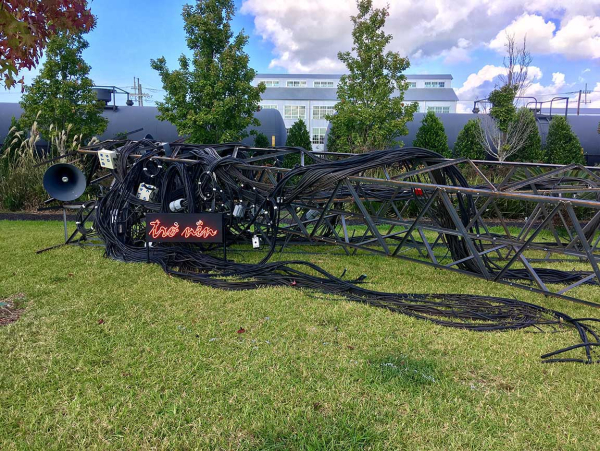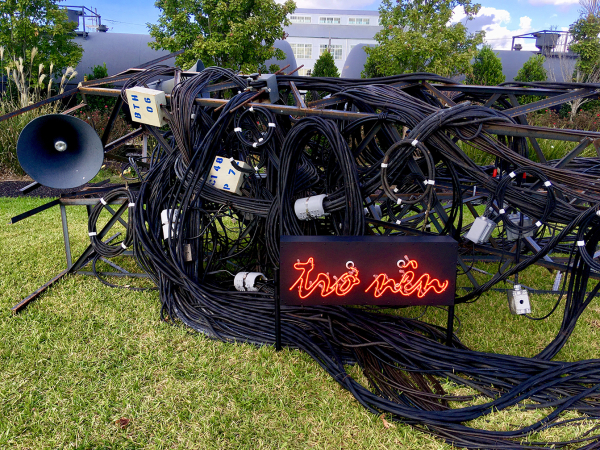To Speak A Language
Angle iron, found electric wires, public address speakers, metal boxes, found book, neon light, electrical components, amplifier, sound
168” x 120” x 24”
2012 / 2018
“To speak a language is to take on a world, a culture…To speak is to be in a position to use a certain syntax, to grasp the morphology of this or that language, but it means above all to assume a culture, to support the weight of civilization.”
-Franz Fanon
The Vietnamese cityscape is known for electric poles with public loudspeakers, chaotically tangled with telephone and electrical wire. These loudspeakers were originally installed during Vietnam’s resistance war with France in the 1950’s, and it has functioned to convey multiple voices, subsequently taken control by the American military and the Vietnamese communist government. In Truong’s installation, two electric poles lie on the ground with one piled on top of another. The speakers emanate eerily with the sound of collective voices, including a song by French Legion soldiers, Vietnamese Catholic chanting, and an American pop song popular in Vietnam during the war. The installation is accompanied by a red neon light, which reads “trở nên,” a Vietnamese compound word that can be translated into “becoming” or “to become.” The word was extracted from a Catholic Vietnamese student’s school notebook for learning English. The notebook was filled with fastidious handwritten copies of “universal” stories in the English language such as “Ali Baba and the Forty Thieves” and “The Three Swans.”
The installation is a de-colonial meditation on the relationship between the colonized subjects and languages/ideologies. Influenced by Franz Fanon’s writings on decolonization and the psychopathology of the colonized, Truong attempts to expose indelible colonial residue within the Vietnamese cultural and psychological landscape, which she sees as symbolized by these electric poles. Strangely anthropomorphized, the poles are piled on the ground as if corpses that have come to speak of the dominant ideologies of the west one after another. All the sounds are collectively sung. It addresses the process of “becoming” certain subjects, solidified through the collective performance of singing and listening: sonic collectivity that can be either misleadingly dangerous or empowering, functioning both as mechanisms of oppression and resistance.

